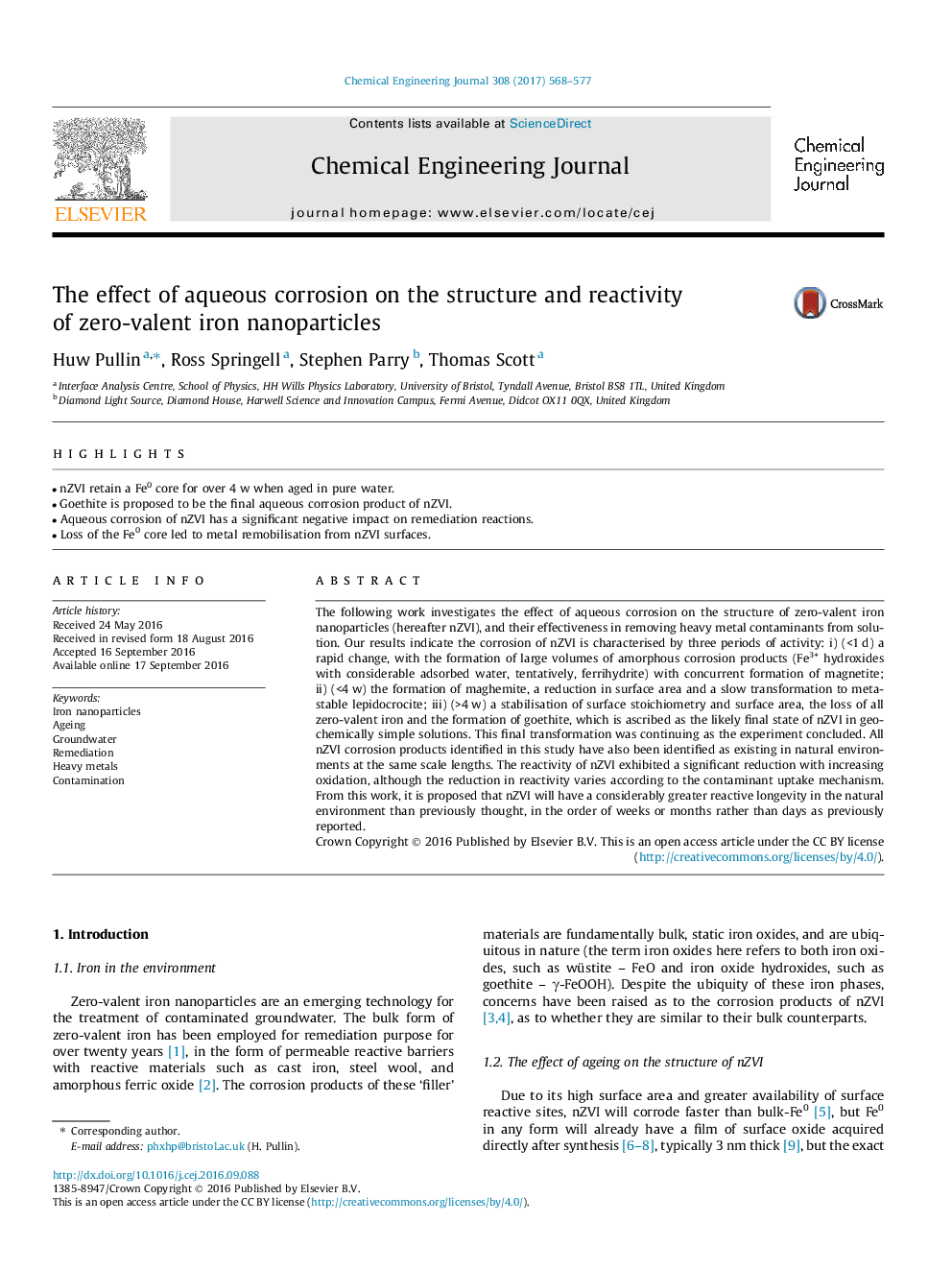| Article ID | Journal | Published Year | Pages | File Type |
|---|---|---|---|---|
| 4763712 | Chemical Engineering Journal | 2017 | 10 Pages |
Abstract
The following work investigates the effect of aqueous corrosion on the structure of zero-valent iron nanoparticles (hereafter nZVI), and their effectiveness in removing heavy metal contaminants from solution. Our results indicate the corrosion of nZVI is characterised by three periods of activity: i) (<1Â d) a rapid change, with the formation of large volumes of amorphous corrosion products (Fe3+ hydroxides with considerable adsorbed water, tentatively, ferrihydrite) with concurrent formation of magnetite; ii) (<4Â w) the formation of maghemite, a reduction in surface area and a slow transformation to metastable lepidocrocite; iii) (>4Â w) a stabilisation of surface stoichiometry and surface area, the loss of all zero-valent iron and the formation of goethite, which is ascribed as the likely final state of nZVI in geochemically simple solutions. This final transformation was continuing as the experiment concluded. All nZVI corrosion products identified in this study have also been identified as existing in natural environments at the same scale lengths. The reactivity of nZVI exhibited a significant reduction with increasing oxidation, although the reduction in reactivity varies according to the contaminant uptake mechanism. From this work, it is proposed that nZVI will have a considerably greater reactive longevity in the natural environment than previously thought, in the order of weeks or months rather than days as previously reported.
Related Topics
Physical Sciences and Engineering
Chemical Engineering
Chemical Engineering (General)
Authors
Huw Pullin, Ross Springell, Stephen Parry, Thomas Scott,
